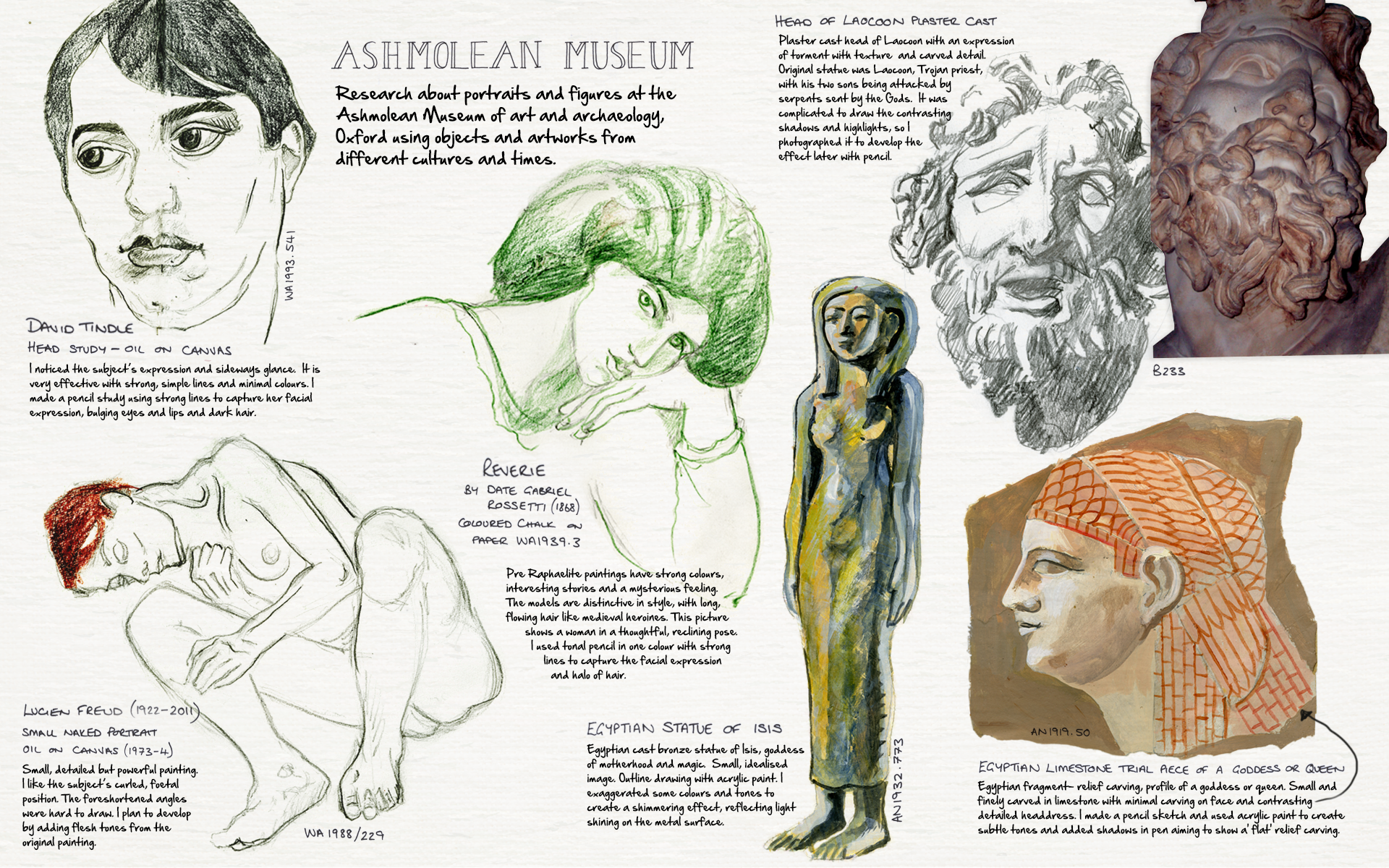Portraits
- Museum: Ashmolean Museum
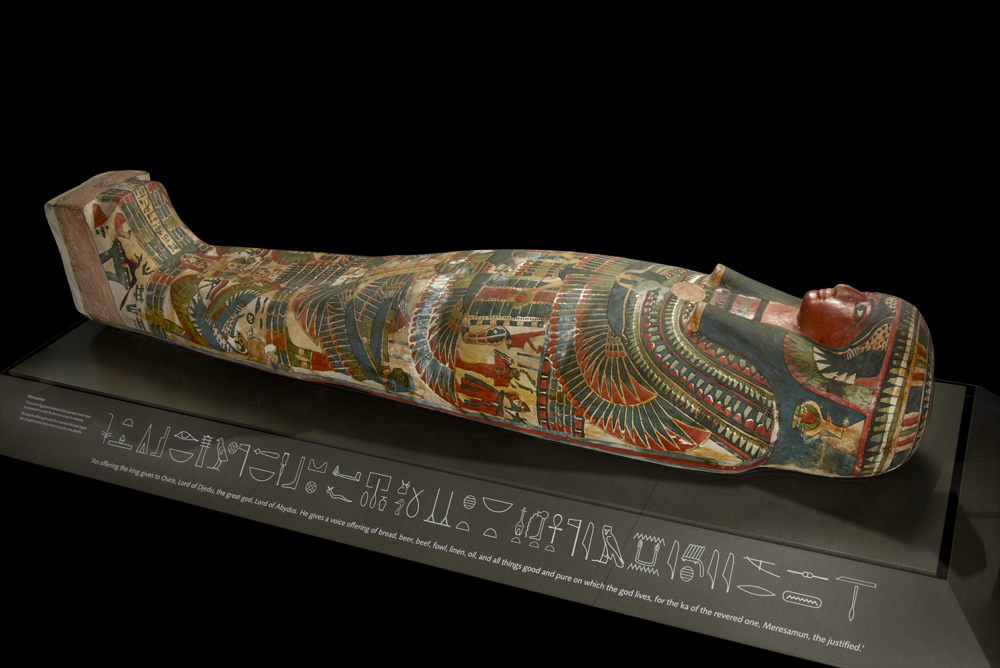
Human form in Egyptian objects
Mummy and cartonnage of Meresamun, a female musician in the cult of Amun. Thebes, 830-715BC. AN 1960 1288
Explore the Ashmolean’s Egypt Galleries to discover cast metal votive statues of different Egyptian Gods. Discover intricately decorated, brightly coloured mummies, painted with symbols and hieroglyphs. Find carved stone buildings, inscriptions, funeral stele and statues of Gods in animal form. Explore ushabti figures, once buried with the dead an believed to come alive as servants in the afterlife.

Egyptian representations of the human form
The Princesses fresco. Fragment of wall painting showing the two daughters of Akhenaten and Nefertiti. AN 1893 1 41
Explore the different representations of the human form, in many different media and styles in the Ashmolean’s Egypt galleries. Find models of people performing tasks, wall paintings of royal family members, carved statues of pharaohs and gods and stone inscriptions and buildings. Compare the presentation of clothing, adornment, hairstyles in different objects.
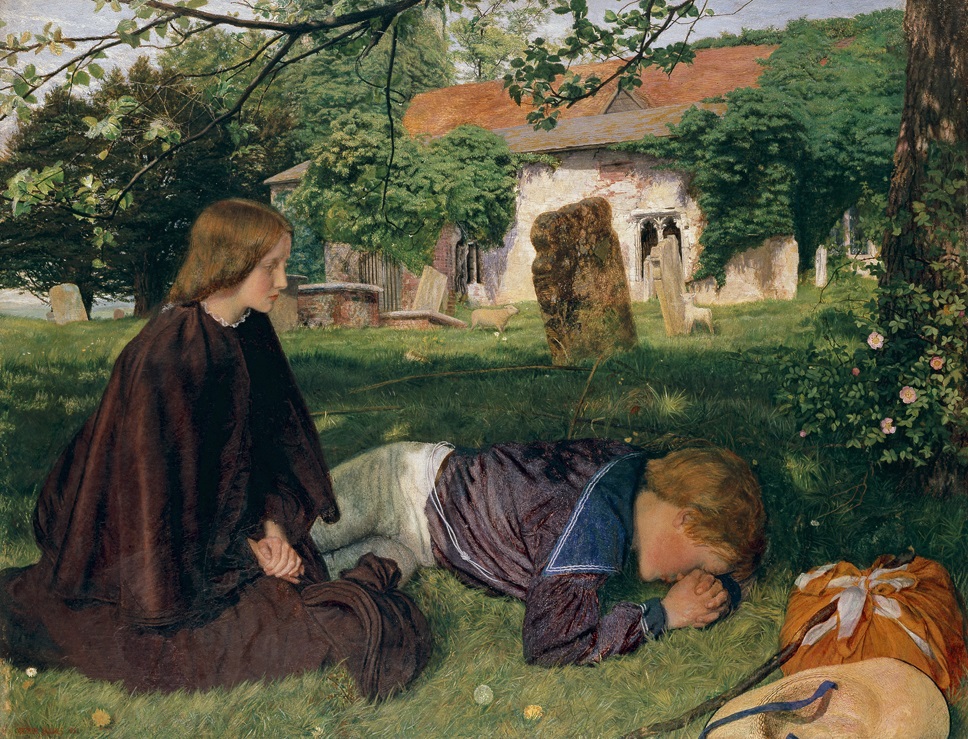
Pre Raphaelite paintings
Home from Sea, Arthur Hughes (1832-1915).WA1907.3 A boy is desolate over the grave of his mother. The ephemeral spider’s webs, dew drops, dog roses and dandelion seeds all emphasise the theme of transience. The boy’s loss is reflected in the lamb separated from its mother by the barrier of the tomb.
The Pre Raphaelite Brotherhood refers to a group of artists who were opposed to the Royal Academy’s promotion of the Renaissance painter Raphael. They were inspired by nature, and their paintings often feature themes from religion, literature and poetry, particularly dealing with love and death, they also explored modern social problems. Explore the Ashmolean’s Pre-Raphaelite gallery. Make annotated sketches to show how figures are portrayed and paintings are composed and explore the vibrant use of colour. Identify common features and subject themes.
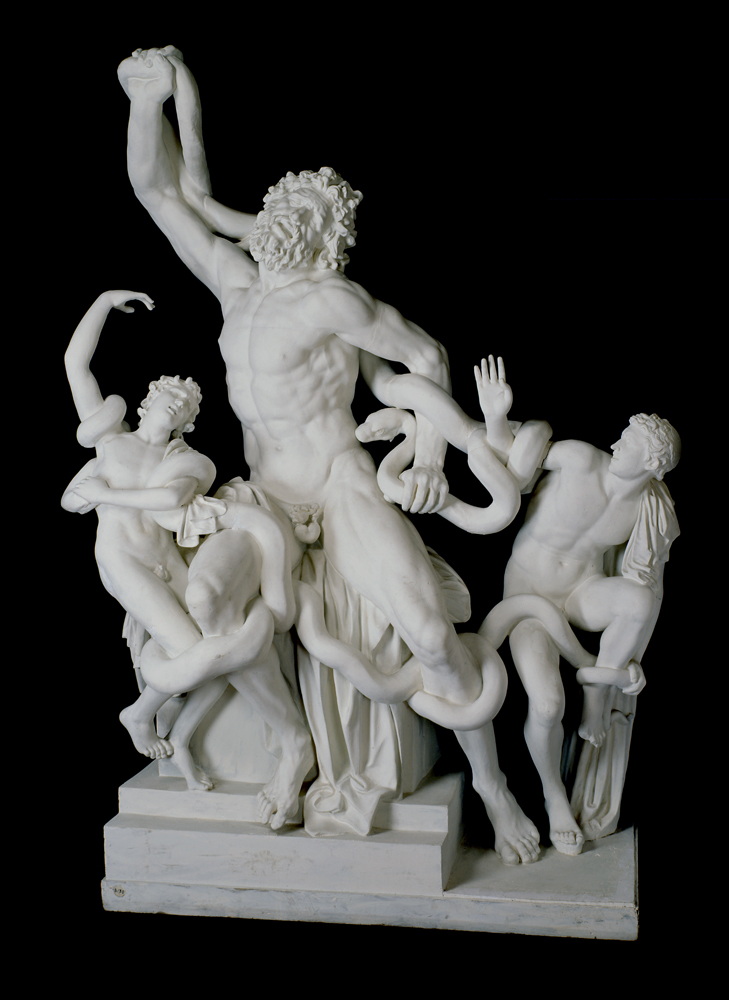
Laocoon
Laocoon, from Rome, about 50-20BC B130
The Trojan priest Laocoon and his sons struggle with two flesh eating snakes that have been sent as a divine punishment for the priest’s crimes. CG
Wealthy visitors taking the Grand Tour around Europe often brought back similar souvenirs from their travels. Explore the Museum’s Randolph Sculpture Gallery with original classical sculpture transported to England at this time. The Classical world was densely packed with sculpture and inscriptions. Use the Museum’s Cast Gallery to consider how the human form is presented: pose, physical features and details of hairstyles, clothing and facial expression. The original statues were brightly painted to give an impression of a real person. Experiment with bringing these casts back to life by drawing them and adding colour.
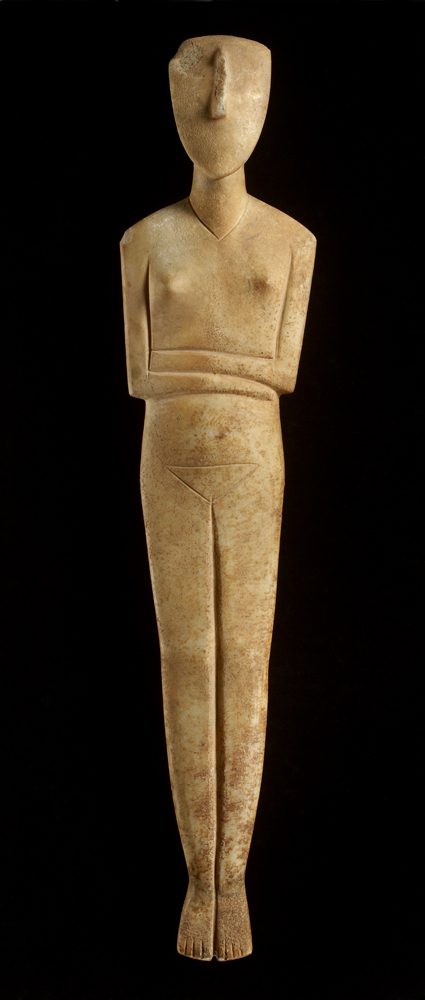
Body Image across time
Cycladic Figure, 2800-2300BC Crete. AN1896 1908 AE176
One of the largest intact marble figures of the early Cyclades. Some body features are clearly shown; the eyes were originally painted and traces of the right eye are visible halfway down the nose.
The Ashmolean Museum’s collections contain many varied of representations of the human form in painting and sculpture across different times and places. What materials and techniques have been used? What similarities and differences can you observe? Make sketches to show your ideas.
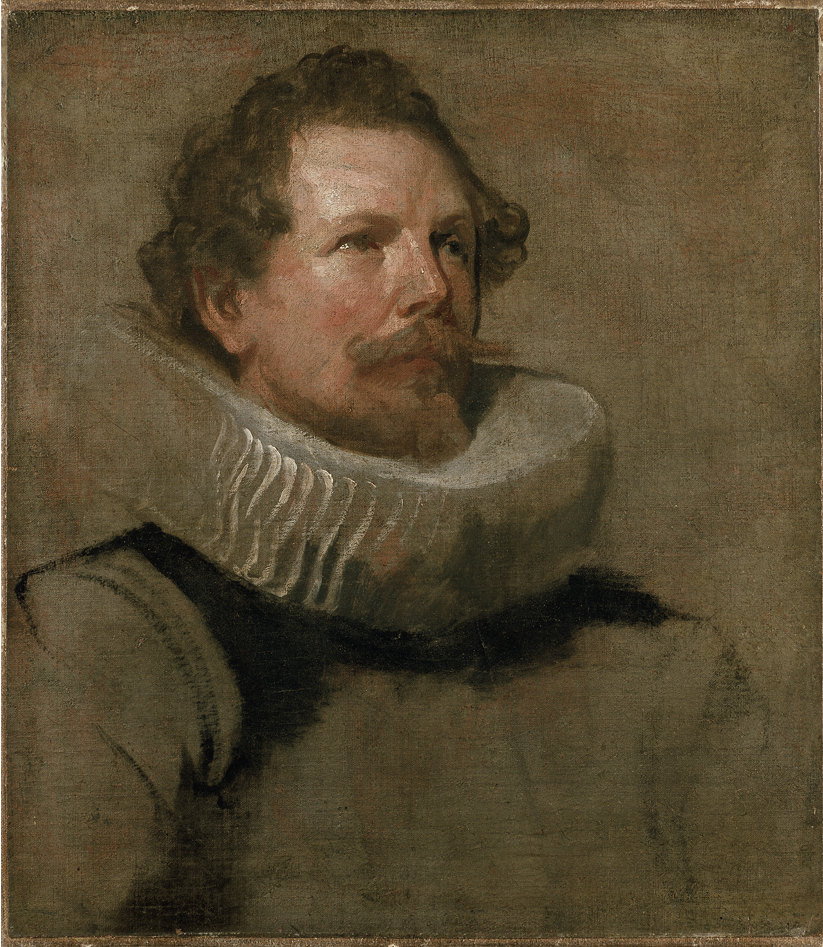
Portrait Studies
Portrait Study of a Man, looking Upwards to the Right
Sir Anthony van Dyck (1599-1641) WA1855 172
Explore a range of portraits across the Ashmolean’s Western Art Collections. Compare and contrast head studies. Consider the composition, choice of materials, physical pose and facial expression. Choose and draw your favourite, then add annotations to show key features.
